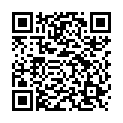|
|
| Modulbezeichnung (engl.):
Human Factors |
|
| Code: PIM-WN16 |
|
|
4V (4 Semesterwochenstunden) |
|
5 |
| Studiensemester: 2 |
| Pflichtfach: nein |
Arbeitssprache:
Englisch |
Prüfungsart:
Project
[letzte Änderung 21.05.2009]
|
KI857 Kommunikationsinformatik, Master, ASPO 01.04.2016
, 2. Semester, Wahlpflichtfach, allgemeinwissenschaftlich
KIM-HUMF (P221-0113) Kommunikationsinformatik, Master, ASPO 01.10.2017
, 2. Semester, Wahlpflichtfach, allgemeinwissenschaftlich
MAM.2.2.6 (P221-0113) Engineering und Management, Master, ASPO 01.10.2013
, 8. Semester, Wahlpflichtfach, nicht informatikspezifisch
PIM-WN16 (P221-0113) Praktische Informatik, Master, ASPO 01.10.2011
, 2. Semester, Wahlpflichtfach, nicht informatikspezifisch
PIM-HUMF (P221-0113) Praktische Informatik, Master, ASPO 01.10.2017
, 2. Semester, Wahlpflichtfach, nicht informatikspezifisch
PIM-HUMF (P221-0113) Praktische Informatik, Master, SO 01.10.2026
, 2. Semester, Wahlpflichtfach, nicht informatikspezifisch
geeignet für Austauschstudenten mit learning agreement
|
|
Die Präsenzzeit dieses Moduls umfasst bei 15 Semesterwochen 60 Veranstaltungsstunden (= 45 Zeitstunden). Der Gesamtumfang des Moduls beträgt bei 5 Creditpoints 150 Stunden (30 Std/ECTS). Daher stehen für die Vor- und Nachbereitung der Veranstaltung zusammen mit der Prüfungsvorbereitung 105 Stunden zur Verfügung.
|
Empfohlene Voraussetzungen (Module):
Keine.
|
Als Vorkenntnis empfohlen für Module:
|
Modulverantwortung:
Prof. Steven Frysinger |
Dozent/innen:
Prof. Steven Frysinger
[letzte Änderung 19.12.2011]
|
Lernziele:
The students will be able to:
- Describe the anthropometric, ergonomic, and cognitive abilities and limitations of humans in the context of their use of such systems as automobiles, tools, workstations, and computing systems;
- Conduct critical analyses of systems with respect to the degree and effectiveness of integration with users’ characteristics;
- Identify and characterize the users of a particular product or process to be designed;
- Gather and analyze needs assessment data from representative users of a product or process;
- Develop a Hierarchical Task Analysis of the users;
- Develop both a conceptual design and a physical design of a product or process;
- Write a user requirements specification for the system;
- Develop a test plan by which their system design could be submitted to summative evaluation upon implementation.
[letzte Änderung 23.11.2017]
|
Inhalt:
The course content will include some (but not necessarily all) of the following topics, adjusted in part based upon the backgrounds and interests of the students:
1. Introduction to Human Factors
2. Research Methods
3. Design and Evaluation Methods
4. Visual Sensory System
5. Auditory, Tactile, and Vestibular System
6. Cognition
7. Decision Making
8. Displays
9. Controls
10. Engineering Anthropometry and Workspace Design
11. Biomechanics at Work
12. Work Physiology
13. Stress and Workload
14. Safety, Accidents, and Human Error
15. Human-Computer Interaction
16. Automation
17. Transportation Human Factors
18. Selection and Training
19. Social Factors
[letzte Änderung 21.05.2009]
|
Literatur:
An Introduction to Human Factors Engineering by Christopher D. Wickens, John Lee, Yili Liu & Sallie E. Gordon-Becker (2nd edition) 2003
[letzte Änderung 21.05.2009]
|
Modul angeboten in Semester:
SS 2025,
SS 2024,
SS 2023,
SS 2022,
SS 2021,
...
|


